BEYOND, BELOW, AND ABOVE Live Drønen on Cauleen Smith at Astrup Fearnley Museum, Oslo
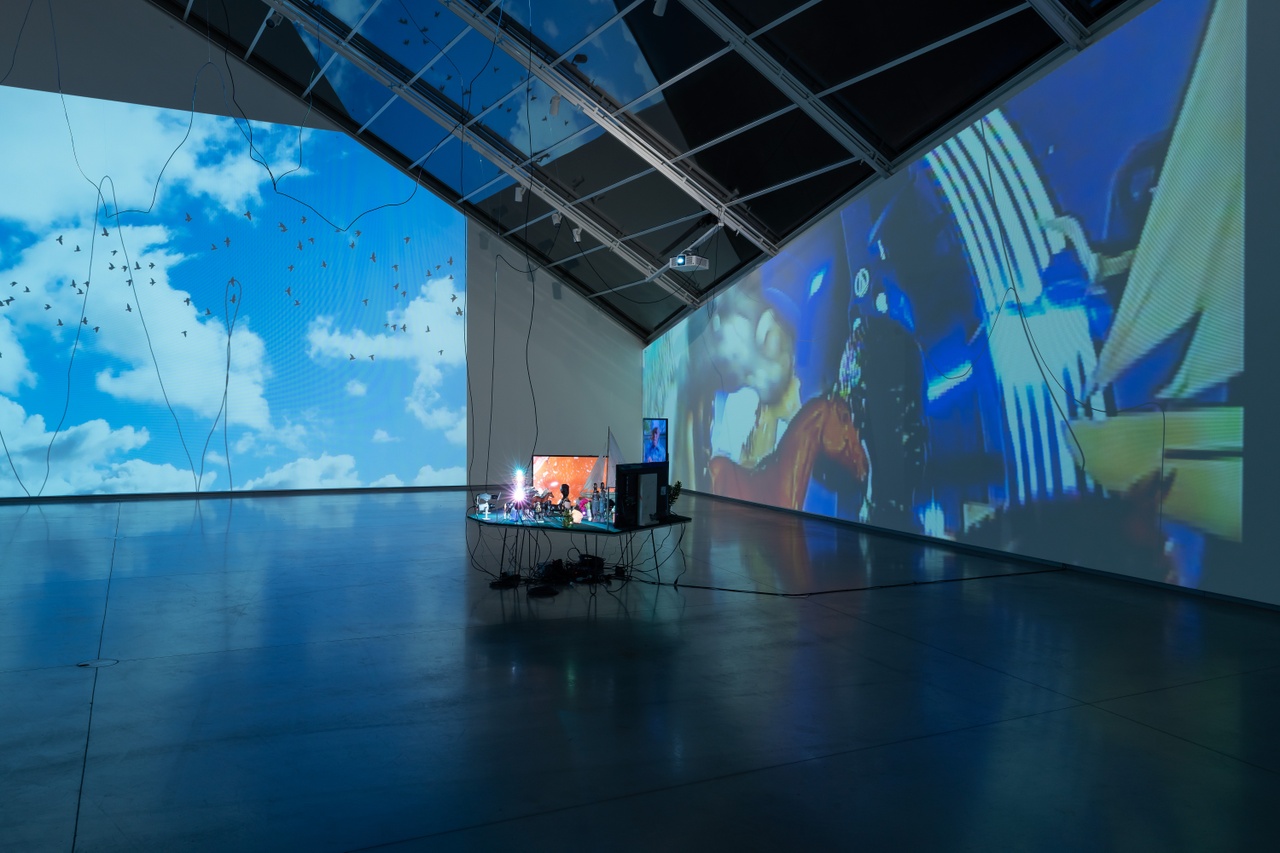
Cauleen Smith, “…we are running…,” 2024
The United States has again permeated the Astrup Fearnley Museum on the pier of Oslo’s city center. Yet this time, we’re not presented with US icons, [1] nor is its focus Californian celebrity culture, as praised and scrutinized by Alex Israel in 2016. In a 2018 article, professor of art history Ina Blom criticized the private museum under its previous director for having developed this tendency, which she described as an almost automated “expanded pop sensibility” that allowed it to be both US-centered and somewhat “global” at the same time, while resonating “in most contexts that are, in one way or another, affected by modern capitalism and consumer culture. [2] Several years and exhibitions and one museum director later, the museum’s current show turns to the US South and Southwest as the thematic site of American visual artist and filmmaker Cauleen Smith’s in-depth aesthetic, intellectual, and poetic reflections. It looks at the interrelations between the reverberant violence of colonialism and slavery, as well as the historical and modern-day mass extraction of natural resources in this geological area. As such, the exhibition seems to move beyond previous presentations of a certain cultural gullibility, and – perhaps more so than previous US-centered shows – resonate directly with the Norwegian context, as it brings our attention to the country’s own involvement in colonialism and extraction from Indigenous land and other natural resources.
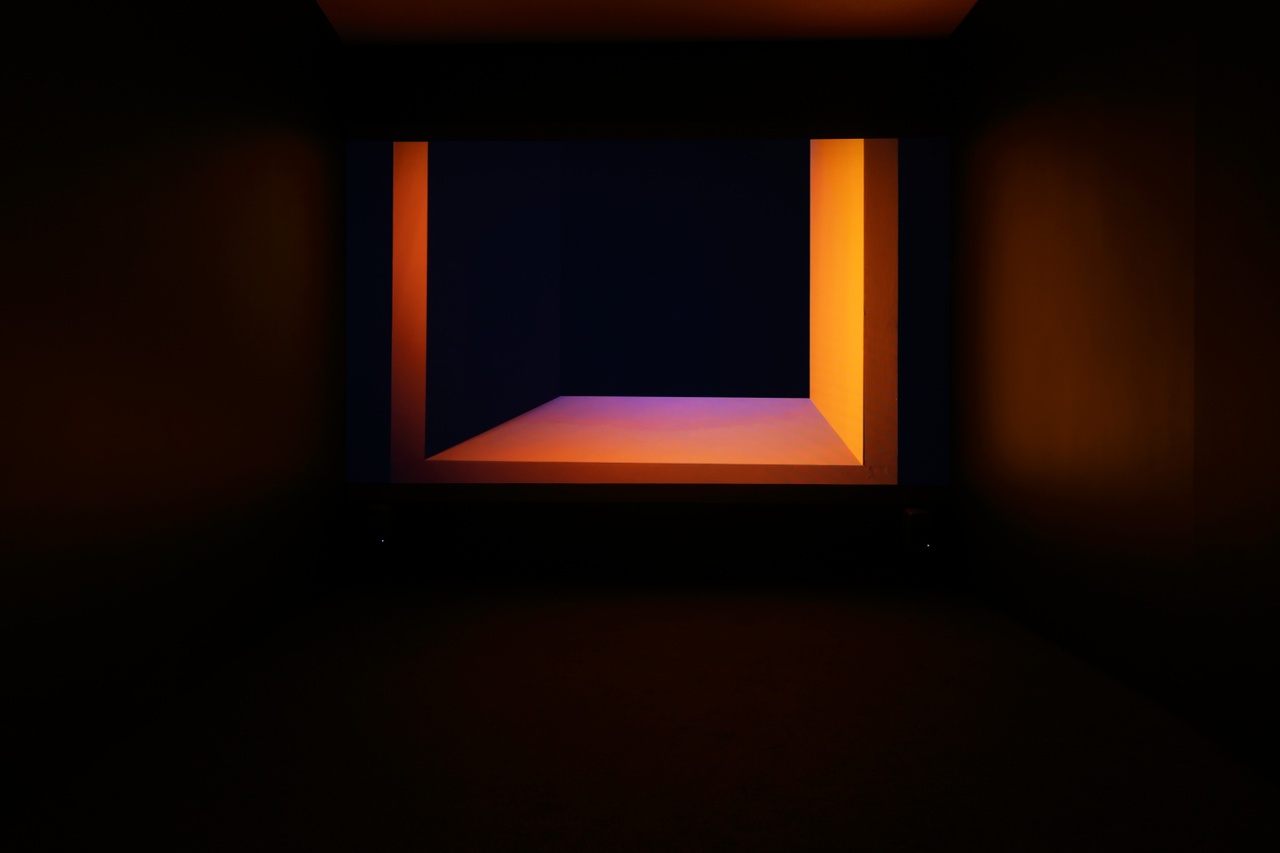
Cauleen Smith, “Flori Canta,” 2020
Curated by Rhea Anastas and Mia Locks and stretching over the museum’s main building, “The Deep West Assembly” sets a variety of mediums in motion. It includes video, photography, flags and banners, sculpture, and an eponymous new film – all in a distinct, kaleidoscopic visual language. Entering the exhibition, I’m met by the site-specific installation …we are running… (2024), filling the large downstairs space. It consists of four projections onto the walls, with a table filled with objects standing in the middle of the room. The technical apparatus behind the installation is highly visible; cords are hanging from the ceiling and interrupting the projections. While I find this a refreshing way to use the airy space beneath the colossal arched ceiling of the building’s Renzo Piano–architecture, it also appears as intended to direct viewers to slowly discern what we’re seeing. As the cords lead to the table, one finds surveillance cameras directed at three desktop-sized screens – foregrounded by accumulated objects that run from horse sculptures to prescription drugs to crystals, stones, and other small items – and understands that this setup is what is projected onto the surrounding walls. The footage on the smaller screens includes shots of landscapes, city views, and geological components. In a separate room to the side of this large hall, the video work Flori Canta (2020) is presented. Referring to a still-life painting by Juan Sánchez Cotán (1560–1627), in the video, Smith imitates the painted frame or window-like space within which Cotán painted vegetables and fruits, and displays a beautiful, almost abstract, play with light, sound, and objects. While Flori Canta can be seen as an attempt to distort perception, …we are running… displays the layers of mediation and potential manipulation behind the images we see. Although no revolutionary act, the latter is done with a level of physical intimacy that makes us viewers as bodies in the space get close to, and thus see an opportunity to take part in the making of, the landscapes portraited. As such, the works function well together in pointing to both a criticism and a possible untangling of the medium of film – whether it is used as art, a surveillance tool, or cinematic space – from its structurally built-in biases.
My favorite work in the exhibition is a 35mm slideshow titled A Lecture Under the Trees (2024), in which mobile phone images taken by the artist between 2010 and 2024 are combined with excerpts from the 1977 book Arrival: Book 1 of Daily Lives in Nghsi-Altai by Robert Nichols. “Gas penetrates / water dissolves / the membrane holds” appears for a few seconds before an abstract-looking image of what could be either paint or a colorful oil spill. Several images show stones and plants; one is of a faded concrete wall with the tag “Gaza” on it. The text’s poetic and mystic reflections around ecology from Nichols’s utopian novel on a fictional future land, which Smith discovered by chance, had, I later learn, inspired both Ursula K. Le Guin and Octavia Butler – authors Smith highly cherishes. Such serendipitous interrelations seem to be important in her artmaking and thinking, and they are subtly hidden everywhere. Another example are two flags in black, red, and green. They are based on artist David Hammons’s 1990 work African American Flag, which in turn references the Pan-African flag, which incidentally shares its colors with the Palestinian flag. One of Smith’s flags carries a watermelon pattern, which points to both a racist stereotyping of Black people and a symbol that has been used for decades to show solidarity with the Palestinian people. Connecting Afro-diasporic thought to the Palestinian liberation movement calls for a cross-cultural, -historical, and -geographical solidarity. A Lecture Under the Trees deepens and widens this call to include ecological concerns. The poeticism in which the work does so – both visually and through using Nichols’s words – is what makes it so appealing to me, as it appears non-didactic and open; although the piece contains references, as viewers, we are not reliant on knowing these to be moved by the work. It rejects modernist ideas of progress through portraying a double timeliness: the geological time of our natural surroundings and Nichols’s science-fiction-like futurity. “The dry dandelion will float to the moon,” one slide reads. As such, the placement of the work in a liminal space between the video installation and the stairs to the building’s second level seems appropriate.
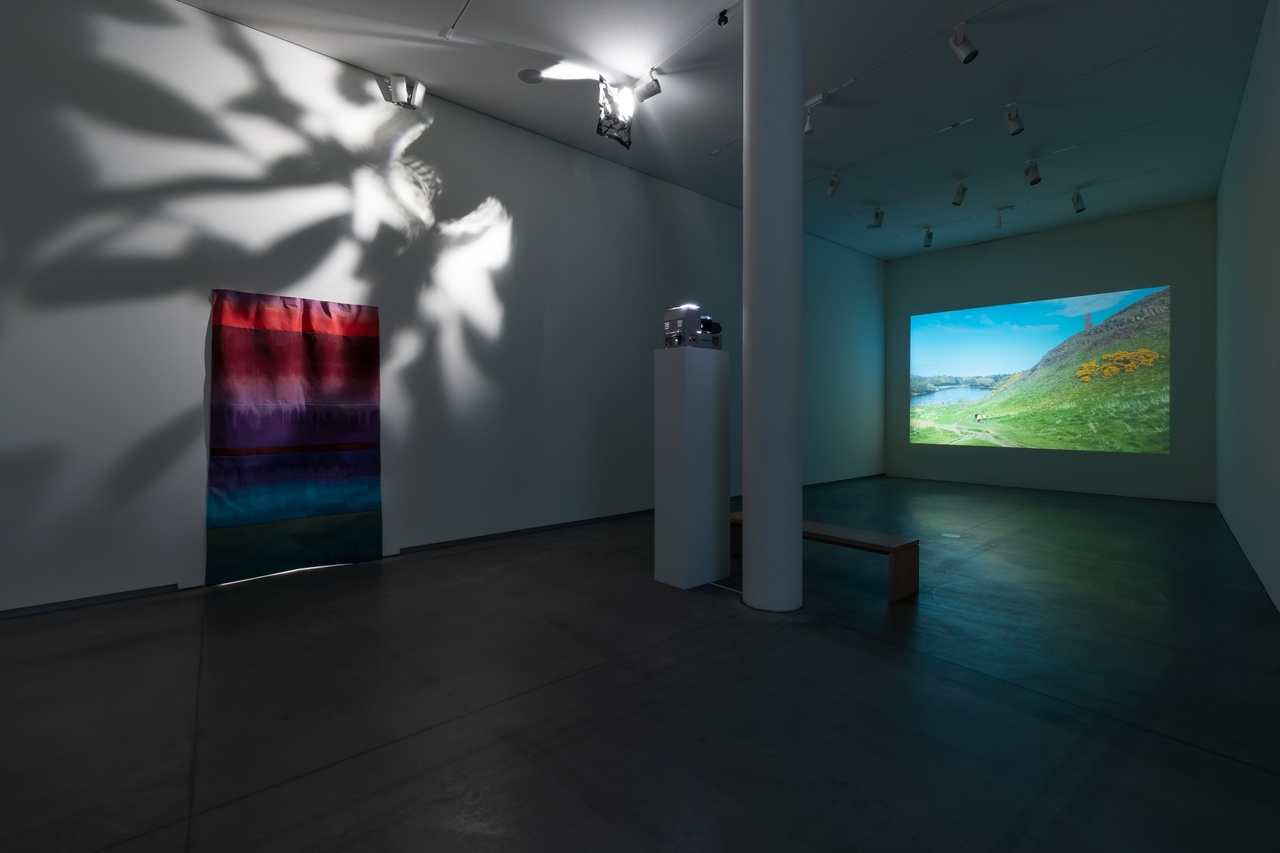
“Cauleen Smith: The Deep West Assembly,” Astrup Fearnley Museet, Oslo, 2024
Upstairs are four bodies of work in separate spaces. One is a series of wax sculptures on steel stands. All titled NONCONFORMITY, they have multiple layers of different colored wax reminiscent of seismic simulations and volcanic landscapes. These allude to a concept mentioned several times in the exhibition text: that of geological time. Also referred to as “deep time,” it is used to describe the enormous stretches of time – billions of years – of the universe and earth’s estimated evolutions, effectively giving a perspective in which humans are no more than a microscopic blip. Some of the visually striking color combinations of these sculptures are refound on the mezzanine, where activist-like banners in different rectangular and rounded shapes are hanging from the ceiling. Similar works by Smith were on view in the 2017 Whitney Biennial, which Locks cocurated, and Smith has said that they are inspired by protest culture – some of the works were produced in the wake of the Black Lives Matter movement. [3] Made in a variety of textiles, such as satin and velvet, they bear acrylic paint, sequins, crystals, and chains. On some are slogans – “you rock my volcano” and “…we must become a menace to our enemies,” for instance – while others show a crow with a diamond in its beak, hovering above a volcano. Various banners by Smith are also featured in the new 30-minute-long film The Deep West Assembly (2024). Since Drylongso (1998), her first and only feature – referred to as a “rediscovered black feminist film classic” [4] upon its restoration last year – Smith has made many short films in which she emphasizes various expressions of Black culture and especially improvisation and narration techniques. In her new production, she explores Blackness through a vast pool of references from Édouard Glissant to Suzanne Césaire to Nina Simone. A monologue combining different texts is performed by actress Dionne Audain, and centers around how the US is built on the colonial genocide of Native Americans, the transatlantic slave trade, and mass extraction of natural resources. The film’s – and exhibition’s – title alludes to a borrowed term from the poet Wanda Coleman, who used “The Deep West” as a term pointing to its horizontal analogue, the US South – and one which Smith in the film places in the Mississippi River Delta. Simultaneously, I read it as alluding to both the mentioned concept of deep time – we see images and hear texts on lava caves and salt domes – and deep history, the part of deep time in which humans have existed. The film intertwines Indigenous and Black thought by looking at how they both relate to these concepts and share kinship with each other and the earth; “The violence of genocidal erasure... the violence in torture and forced labor … the violence of an extractive relationship to the land”; and “My people come from salt,” reads Audain, who also speaks of Blackness as “deep and endless,” and a banner reading “Historic Site of the Los Angeles Slave Market” is carried in front of a heavily trafficked road.
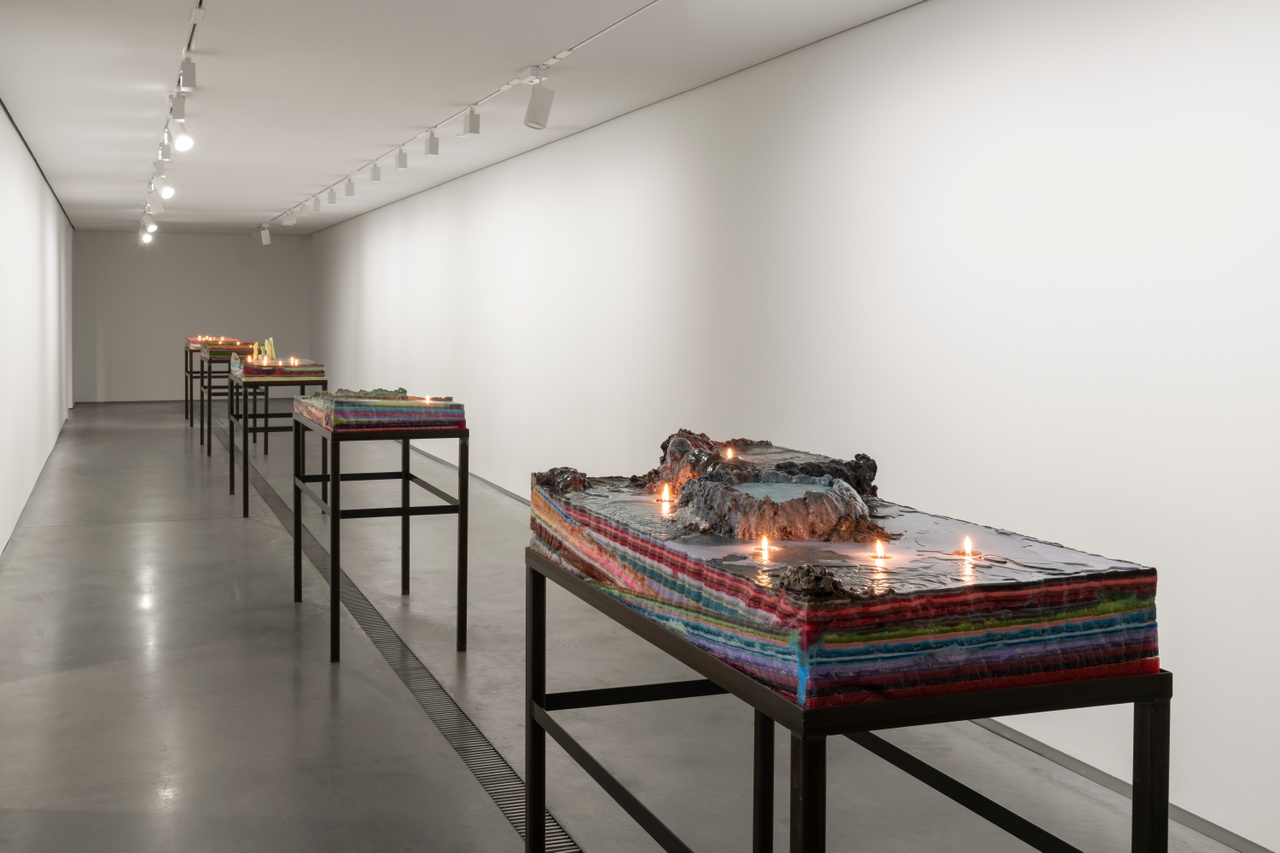
Cauleen Smith, “NONCONFORMITY,” 2024
In a Norwegian context, the exhibition’s questions around colonial histories and extraction are vital. This country’s own colonial history includes participating in the slave trade and overseas colonization under the dependency of Denmark (Denmark-Norway, 1537–1814), and not least the colonization of Sápmi – the land areas where the Indigenous Sámi people have traditionally lived. [5] Despite having ratified the 1989 ILO Indigenous and Tribal Peoples Convention no. 169 and implementing national laws to protect Indigenous rights, the Norwegian government continues to give national and international companies concessions to build on and extract resources in Sápmi areas. [6] As is more well-known, the country is also one of the world’s largest exporters of oil and gas, which since the 1970s have become the main source of its wealth. The Astrup Fearnley Museum is founded on private wealth, which in part comes from the fossil fuel industries, and had the controversial Swedish oil company Lundin Petroleum as one of its main sponsors between 2012 and 2020, [7] a deal that ended right before director Solveig Øvstebø took the helm. [8] Located on Tjuvholmen, an area consisting of corporate offices, a high-end hotel, and one of the city’s most luxurious residential apartments – almost an antithesis to the Norwegian social democratic self-image – Smith’s work serves as poignant criticism of the foundational structures we’re subjected to on local (inside the museum), national, and international levels. Although presenting this work suggests a willingness to review these structures, none of these issues are addressed directly from the museum’s side. An effort has, however, been made to connect to local diasporic communities through an event program co-organized with Oslo-based artist Ayesha Jordan – which included an engaging roundtable discussion with Smith and Jessica Lauren Elizabeth Taylor – but seeing that Smith’s work highly promotes an expanded cross-cultural, -historical and -geographical thinking, it would suit it to also be translated into critical discussions on extraction and Indigenous communities here.
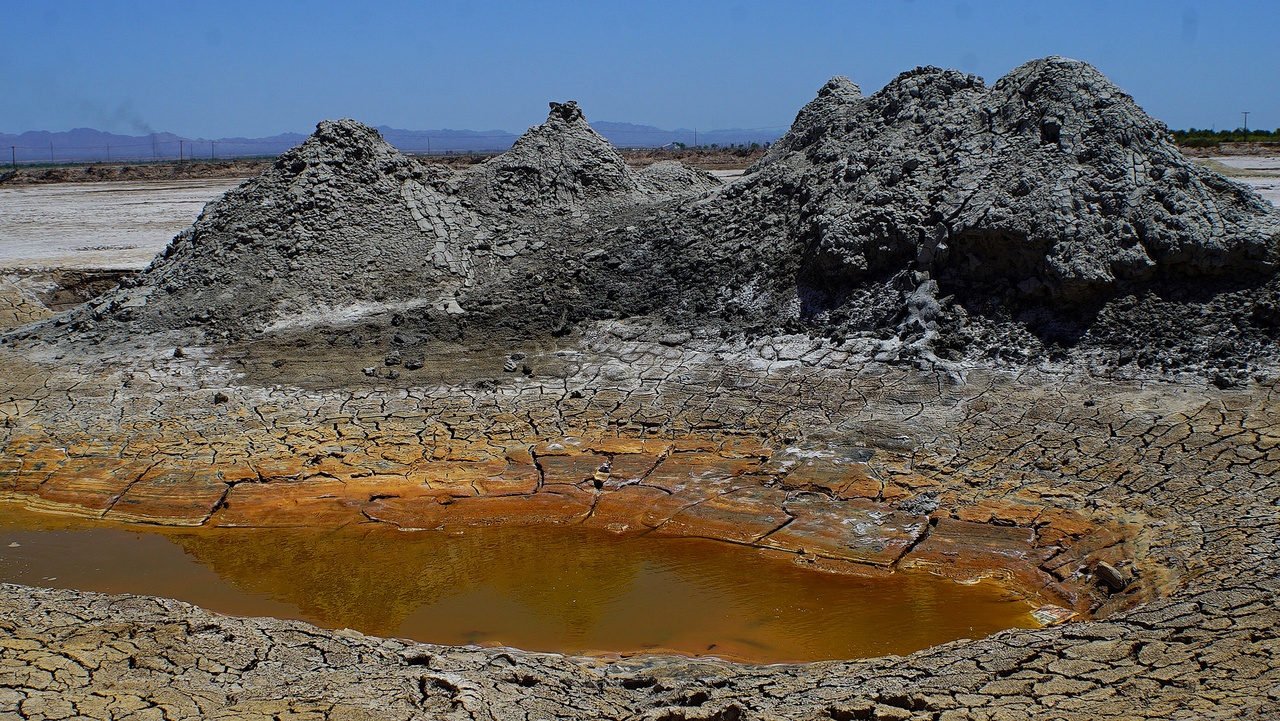
Cauleen Smith, “The Deep West Assembly,” 2024
There’s a large reading room in the exhibition, in which one can pick up books – many by African American, African, and Indigenous thinkers and poets. On the walls are beautiful gouache drawings of some of the book’s covers held by a Black hand – attesting to the importance these references hold to Smith and giving weight to this kind of library, which can, in other contexts, often appear as a gimmicky citation. The space underscores the exhibition’s collaborative philosophy. Rather than highlighting the artist as genius, it successfully manages to urge viewers to look beyond, below, and above such a limiting idea. It does so through looking at both the abovementioned structures’ symptoms and the natural world’s innate order and indifference to this. There is something highly emancipatory about this: worlding at its best.
“Cauleen Smith: The Deep West Assembly,” Astrup Fearnley Museum, Oslo, June 14–September 15, 2024.
Live Drønen is a writer and curator based in Oslo. She holds an MA in contemporary art theory from Goldsmiths, University of London and has a background in journalism and media studies. Her work has appeared in outlets such as Kunstkritikk, Artforum, and Various Artists. Until recently, Drønen held the position of Interim Artistic Director at UKS (Young Artists’ Society) in Oslo.
Image credits: 1.–4. Photo Christian Øen; 5. © Courtesy of Cauleen Smith, photo Mar Sudac
Notes
| [1] | Such as in Good Morning America (2015) and Los Angeles – A Fiction (2017). |
| [2] | Ina Blom, “Et veldig privat museum” [A very private museum], Morgenbladet, October 12, 2018. Unless otherwise noted, all translations are by the author. |
| [3] | Siddhartha Mitter, “Waking Life: Siddhartha Mitter on the Art of Cauleen Smith,” Artforum 57, no. 9 (May 2019). |
| [4] | Kaitlyn Greenidge, “Drylongso is a Rediscovered Black Feminist Film Classic,” Harper’s Bazaar, March 29, 2023. |
| [5] | Including the aggressive Norwegianization process from 1950 to roughly 1980. See Henry Minde, “Assimilation of the Sami: Implementation and Consequences,” transl. Einar Blomgren, Gáldu Čála, Journal of Indigenous Peoples Rights, no. 3 (2005): 6. |
| [6] | Most recently, the Norwegian Government was convicted in the country’s Supreme Court for violating human rights by giving out licenses to build and operate wind farms on the Fosen peninsula. See “Norwegian Government Apologises to Sámi Reindeer Herders on the Fosen Peninsula,” March 4, 2023, Ministry of Energy, Government.no website. |
| [7] | When the sponsorship agreement was made, Lundin Petroleum was under investigation for complicity in genocide in what is now South Sudan, where the company had operations between 1997 and 2003; see “Trial Reports – The Lundin Oil Case,” Civil Rights Defenders. |
| [8] | According to a museum representative, the deal “ran out in December 2019 and came to its natural end.” Mariann Enge, “Omstridt sponsoravtale avsluttet,” Kunstkritikk, February 12, 2020, Translation by the author. |
